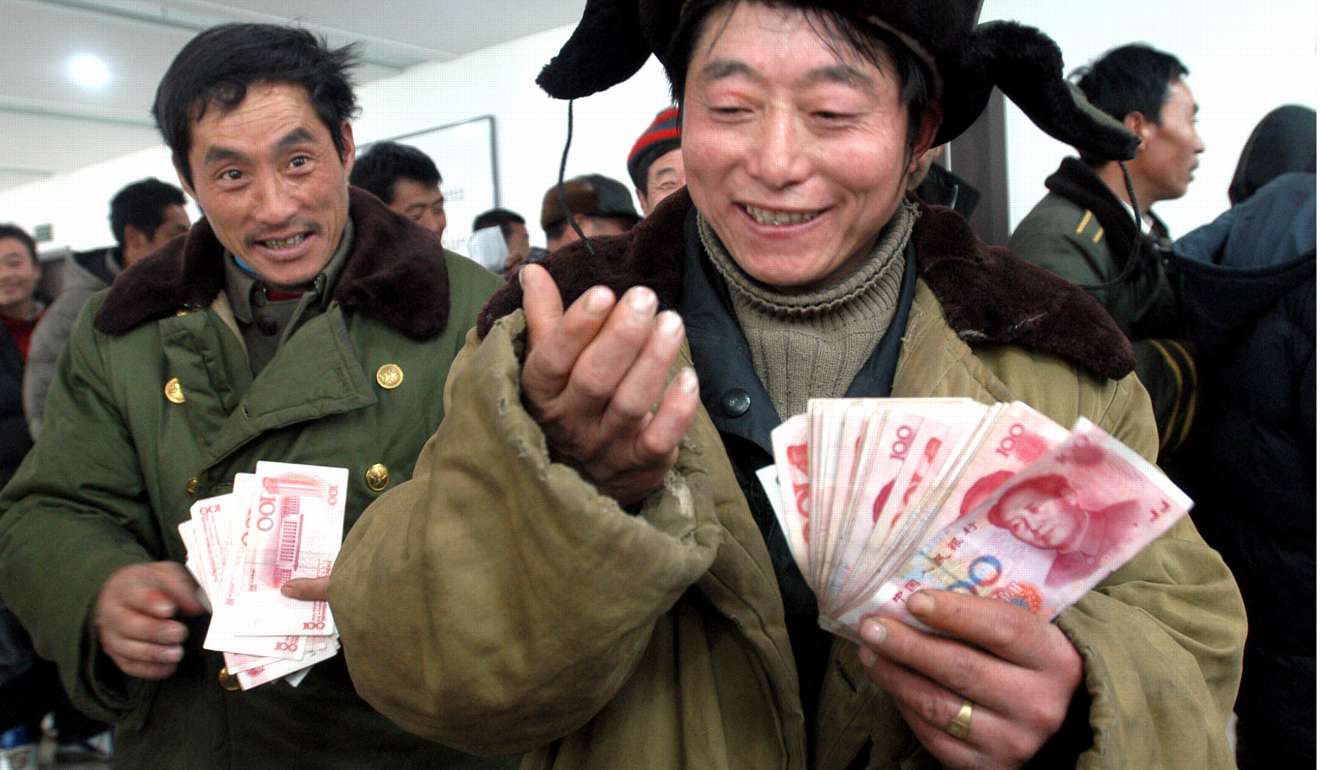
China’s rising wages policy has a logical end game
By 2025 the target is to have 78pc of urban households, 630m million, counted as middle class consumers. If Beijing achieves this, consumer spending will rise from US$10.7tr in 2011 to US$67tr
As it has become fashionable to wring your hands over the challenges facing China’s economy, commentators have in recent weeks screeched siren calls over fast-rising labour costs.
China’s manufacturers are about to hit a cost competitiveness wall, they say, as companies head to other, cheaper locations.
Foreign investment will wilt, they predict. Or robots will take over. Donald Trump will woo US manufacturers home to give jobs back to America, and “make America great again”.
Forgive me, but I don’t buy it. The first and clearest hint that China’s fast-rising wages are actually a good thing rather than bad is that wage increases are not the result of acute labour shortages, or bellicose union pressure.
No, they are a direct result of China’s 2004 Regulation on Minimum Wages, which set a Five-Year Plan target of lifting minimum wages by 13 per cent a year – and household incomes by 7 per cent.
As minimum wages countrywide have more than doubled, this in turn has pushed up average real wages by over 10 per cent a year. An average worker in 2004 earned yuan 1,500 (US$190). By 2014 (the latest date for official figures) earnings averaged yuan 4,200.
This policy might at first seem lunatic for an emerging economy that had built an impregnable position as “manufacturer to the world” on the back of low wages.
Certainly many foreign companies that had set up manufacturing operations on the mainland – including many thousands from Hong Kong – protested fiercely, lobbying hard for Beijing to relent. But Beijing ignored the protests, and for good reason.
First, and most important, China’s economic planners recognised that the era of cheap contract labour for export manufacturing operations must inevitably come to an end.
As company value chains were broken down – as with Apple, which manufactures all of its iPhones in the mainland – economic planners realised that China was earning just US$7 per iPhone for its humble, labour intensive assembly role, out of a total sales value of US$500-600. This was a mug’s place in the value chain which simply immiserated the millions of contract migrant labour that filled export manufacturers’ production lines.
The economic rationale was to force up minimum wages, to force manufacturers either to leave, or become more productive, or move up the value chain inside China, to build more skills – and with it higher wages.
The economic rationale was to force up minimum wages, to force manufacturers either to leave, or become more productive, or move up the value chain inside China, to build more skills – and with it higher wages.
Beyond the economic rationale, there were powerful social and political reasons too. Worker protests over low wages and appalling working conditions – including internationally-publicised suicides – reached such a level that concerns grew over wider social and political unrest.
There were also growing concerns over the thousands of “ghost villages” where young kids were growing up looked after by grandparents while parents migrated for years to the distant export processing factories in China’s coastal provinces.
A fourth reason was equally powerful: China had become such a globally dominant force in cheap export manufacturing that international protests became widespread over China “stealing our jobs”. As massive trade surpluses built up with economies like the US and Europe, so the writing was on the wall: China could no longer rely on lifting itself out of poverty by exporting.

Export-focused development since the early 1980s had lifted hundreds of millions in China out of poverty from 88 per cent of the population in poverty in 1981 to just 11 per cent in 2011 – with the aim to eliminate poverty completely by 2020. , but to lift a significant share of the population into a middle class with real consumer spending power required a different approach.
In 2000, a mere 4 per cent of urban households could count themselves as middle class with real consumer spending power. As late as 2011, just 28 per cent of GDP was accounted for by consumption. The target is to lift consumption to 46 per cent of GDP by 2025, and to have 78 per cent of urban households – about 630 million people – who can count themselves as middle class consumers. If Beijing achieves this, consumer spending in China will rise from US$10.7 trillion in 2011 to US$67 trillion by 2025.
As the government willfully forced wages higher, so they recognised the danger of losing price competitiveness. But they also recognised that by comparison with many western economies, wages were so low that they could rise a long way without seriously damaging competitiveness.
For example, even after tripling many families’ incomes over the past 15 years, per capita incomes in China still averaged just US$3,549 a year in 2015, according to the International Labour Organisation (ILO) – compared with US$42,225 in the US, US$24,110 in Germany and even US$14,500 in Korea.
This gave them breathing space, but they at the same time realised that if long-term competitiveness was to be secured, wages could only keep going up if productivity went up at a similar or faster rate.
Chinese workers still averaged just US$3,549 a year in 2015...[government] realised that if long-term competitiveness was to be secured, wages could only keep going up if productivity went up at a similar or faster rate
According to ILO data, labour productivity has risen 9.6 per cent a year since 2003, compared with an annual average increase of 8.2 per cent in compensation. The aim is to lift productivity from Yuan 87,000 per worker in 2015 to Yuan 120,000 by 2020. These are low numbers compared with the US or Germany, but they point to China becoming a massive affluent consumer economy within our lifetimes.
Of course, labour costs are only one factor driving productivity – which is why huge investments are being made in science and technology education, China already produces more STEM graduates (science, technology, engineering and mathematics) than any other country and in automation and robotics. The International Federation of Robotics predicts China will be home to 40 per cent of the world’s industrial robots by 2019.
In short, China has embarked on an unprecedented journey to lift a significant proportion of the world’s poor into what we call the developed world. It is an awesome project, fraught with challenges, and the decision has been made that if some manufacturers flee to lower wage markets, so be it.
If Donald Trump wants these jobs back, China’s answer is simple: you are welcome – and beware what you wish for.
David Dodwell researches and writes about global, regional and Hong Kong challenges from a Hong Kong point of view

